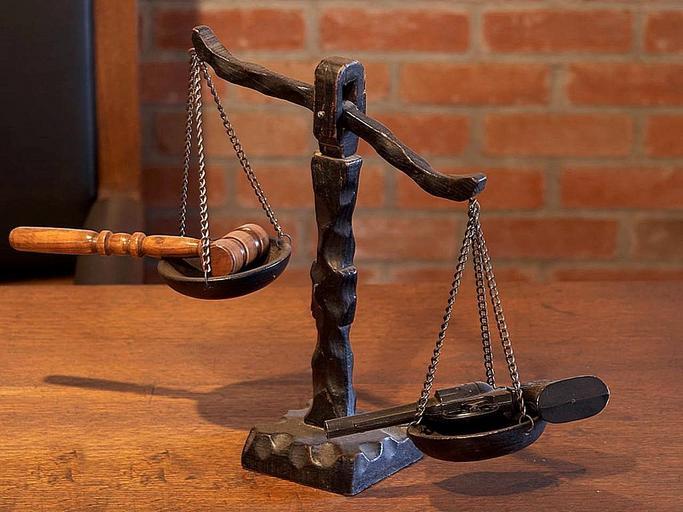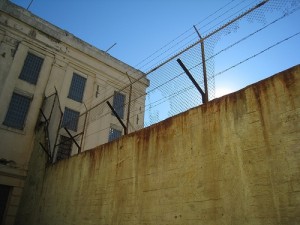
10 Wake Forest L. Rev. Online 107
James W. Sprague
I. Introduction
In the summer of 2002, a Union Pacific Railroad conductor, Arnulfo Flores, agreed to transport ten Mexican nationals across the Mexican-American border undetected.[1] When the nationals arrived on the railroad’s property, Flores ushered them into a large metal railway car and sealed them inside.[2] Flores planned to release the nationals on American soil after crossing the Sarita Border Patrol checkpoint.[3] For reasons unknown, however, the car remained sealed after crossing the checkpoint until reaching its final destination in Denison, Iowa, four months later.[4] Unsurprisingly, none of the nationals survived.[5] The medical examiner determined that all ten nationals perished by a combination of extreme overheating, lack of oxygen, and dehydration.[6]
Surviving family members brought suit against Flores and Union Pacific as well as other parties involved in the deaths of their loved ones.[7] Because the nationals sought to enter America illegally in violation of the Bringing and Harboring Certain Aliens Act, an act that has since been ruled unconstitutional,[8] the plaintiffs could not sustain the suit.[9] Although rarely seen in tort cases,[10] the court used the doctrine of in pari delicto to bar the plaintiffs from recovery despite Flores’ significant contribution to the Mexican nationals’ deaths.[11]
Robert McClelland was Johnny and Elizabeth Inge’s pharmacist.[12] Either negligently or willfully, McClelland sold the Inges, both opioid addicts, thousands of powerful narcotics, far in excess of their prescriptions.[13] Further, McClelland did this knowing, by his own admission, that “there was absolutely no medical necessity or benefit to prescribing these medications.”[14] After suffering significant harm due to their opioid abuse, the Inges filed suit against McClelland and his pharmacy under the Racketeer Influenced and Corrupt Organizations Act,[15] alleging negligence, unfair practices, and breach of fiduciary duties.[16] Again, despite McClelland causing, in part, the Inges’ harms, the court absolved him and his pharmacy from all liability through in pari delicto since the Inges possessed narcotics exceeding their prescription limits, which violated state law.[17]
Finally, Elizabeth Stopera, a single woman, worked as a secretary in the Ford Motor Company’s finance department.[18] Stopera engaged in sexual liaisons with her married coworker Dominic DiMarco, a Ford executive.[19] For about one year, Stopera and DiMarco met repeatedly at Stopera’s house to engage in sexual intercourse, and Stopera contracted human papilloma virus, manifesting as genital warts.[20] DiMarco had known about his infection and his duty to inform sexual partners but nevertheless refused to inform Stopera.[21]
In her suit against DiMarco for fraudulent concealment and battery, the district court dismissed Stopera’s claims because her sexual relationship with DiMarco had been adulterous and, therefore, in violation of Michigan law.[22] Stopera argued on appeal that the court should not bar her suit because the statute outlawing adultery was “never enforced [and] regularly ignored.”[23] The Michigan Court of Appeals disagreed with Stopera’s argument, explaining that a law’s enforcement did not alter the legality of its proscribed conduct, noting that only the legislature’s repeal of the statute could affect such a change.[24] Nevertheless, the court of appeals reversed the district court’s dismissal by using in pari delicto because DiMarco was “egregiously” more morally culpable than Stopera.[25] Although Stopera succeeded in overcoming dismissal, there are nearly identical cases in which courts barred plaintiff recovery.[26]
In all three cases, the plaintiffs engaged in some degree of illegal or wrongful conduct. And, because of this conduct and in pari delicto, two culpable defendants evaded liability despite factually and proximately causing the plaintiffs’ harms. As for the defendant that did not per se evade liability,[27] the court made its decision on whether or not to bar the claim against him by subjectively weighing the moral culpability of the parties, Stopera and DiMarco. Both of these approaches to apportioning liability are distinctly at odds with modern American tort law, which almost universally seeks to allocate damages between parties according to their relative fault,[28] not based on the legality of plaintiff conduct[29] or the relative moral culpability of the parties.[30] In other words, the use of in pari delicto seems to selectively resurrect contributory negligence on the basis of moral standing, completely barring plaintiff recovery for harms caused by the defendant.[31] This Article, then, will explore how in pari delicto operates in tort law and the many ways in which it defeats quintessential tort objectives.
Part II of this Article briefly examines the history of in pari delicto and similar defenses, exploring how this legal doctrine blended with equitable doctrines, taking on some of their characteristics, and how it migrated to tort law. In addition, Part II will discuss the modern doctrine’s variant definitions in tort. Part III will explore in pari delicto’s inconsistencies with tort precepts. This part will explore, in particular, the doctrine’s endorsement for weighing parties’ moral characters, its proclivity for inconsistent and arbitrary results, and, most importantly, its incompatibility with comparative fault. Part IV will recommend how courts should approach in pari delicto in tort cases moving forward.
To be clear, this Article only considers the use of in pari delicto and its variant definitions in the context of tort law and does not seek to critique their use in, say, antitrust or contracts, legal fields which have robust albeit slightly different approaches to in pari delicto.
II. In Pari Delicto’s Development in Tort Law
In pari delicto potior est conditio defendentis means “in a case of equal or mutual guilt . . . the position of the [defending] party . . . is the better one.” [32] This doctrine developed at common law to preserve the decorum of the courts, ensuring that the law would not be a tool for enforcing illegal agreements.[33] The quintessential illustration of in pari delicto involves a highwayman who sues his criminal partner for a withheld share of their ill-gotten gains.[34] Rather than allow such an unsavory suit to sully the court, English common law developed in pari delicto as an affirmative defense, enabling defendants to escape liability when sued to enforce an illegal agreement.[35] The rationale: “[C]ourts should not lend their good offices to mediating disputes among wrongdoers.”[36] Thus, this earliest iteration of in pari delicto clearly required joint illegal enterprise between the plaintiff and defendant.[37] Furthermore, a plaintiff could overcome in pari delicto by showing that the defendant was more morally culpable, which required courts to balance the parties’ relative guilt.[38]
In pari delicto developed to soften common law’s maxim ex turpi causa non oritur actio, “no action arises out of an immoral act.”[39] Ex turpi causa completely barred all plaintiffs from relief if their cause of action arose from illegal or wrongful conduct.[40] In pari delicto’s weighing of culpability, then, provided an exceptive mechanism that sounded in equity rather than law[41] despite (and contrary to common belief) its development as a legal doctrine.[42]
Although in pari delicto began largely in contracts, it migrated to other disciplines, including torts.[43] While the timeline regarding this migration is unclear due to lacking scholarship, tort cases employing in pari delicto began surfacing with some degree of regularity in the first half of the twentieth century.[44]
While the definition of in pari delicto has remained relatively consistent in contract law,[45] its definitions and applications in tort are inconsistent and confused.[46] Some jurisdictions treat in pari delicto as the traditional iteration of the rule, explained above, but a minority of jurisdictions employ in pari delicto as the wrongful conduct rule in tort cases.[47] The wrongful conduct rule evolved from ex turpi causa, discussed above, and historically barred any plaintiff from recovery if the plaintiff was engaged in illegal conduct when suffering a tort.[48] Recall the first case discussed in the Introduction, which involved the deaths of ten Mexican nationals.[49] Under the traditional application of in pari delicto, the surviving family members might have been able to sustain their suits against Union Pacific since Flores’ conduct—resulting in the gruesome deaths of ten people—was arguably more morally culpable than the Mexican nationals’ attempts to illegally enter the country. Texas, however, employs in pari delicto as the wrongful conduct rule.[50] As such, the relative weight of the parties’ moral culpability did not allow an exception to the plaintiff’s recovery bar.
III. In Pari Delicto Conflicts with Fundamental Tort Principles
Regardless of a jurisdiction’s definition for in pari delicto, the doctrine defeats a number of tort law’s fundamental principles. First, most courts that use in pari delicto weigh the relative culpability or moral standing of the parties when determining the plaintiff’s ability to bring suit.[51] Second, the vague tests for determining moral culpability, coupled with other aspects of court analysis, leave room for inconsistent and arbitrary results that might obscure the real reasons behind court decisions. These tests also leave room for judicial bias to influence court decisions. Third, court justifications for in pari delicto reveal a fundamental misunderstanding about compensation in tort law. Fourth, in pari delicto is redundant because tort law already has robust doctrines addressing plaintiff misconduct. Finally, in pari delicto is inconsistent with comparative fault and operates to selectively resurrect contributory negligence[52] in jurisdictions that have abandoned that doctrine.
A. Liability Apportionment in Tort Does Not Rest on the Morality of Party Conduct
In pari delicto can protect claims from dismissal under the wrongful conduct rule, but first requires courts to weigh each party’s moral standing and determine that the plaintiff was less morally culpable than the defendant. This, however, is inconsistent with tort law, because “[t]he moral characteristics of the parties before a court have little or no relevance to that court’s capacity to do justice or injustice.”[53] In addition, tort law does not usually “inquire into the moral fiber of the plaintiff.”[54] Instead, tort law first concerns itself with the causal relationship between the parties’ actions and resulting harm when apportioning liability.[55] Thus, when considering the wrongful conduct of a plaintiff, tort law asks whether or not a party’s conduct causally contributed to the plaintiff’s harm rather than whether the plaintiff’s conduct was morally suspect. In this manner, tort seeks to approach the issue of liability by reference to an objective standard first: causation.[56]
In pari delicto, however, complicates matters as it often calls for weighing the moral culpability of the parties at the dismissal and summary judgment thresholds.[57] Notably, this means the court itself determines whether the plaintiff’s illegal conduct bars his or her claim, long before the factfinder has such an opportunity.[58] Because moral standing is difficult to objectively assess, courts struggle to explain their reasoning.[59] This failure violates additional tort precepts.
B. Courts Applying In Pari Delicto Determine Relative Moral Culpability Without Reference to Discernable Standards, Creating a Mire of Inconsistency and the Risk that Judicial Bias Will Affect Court Decisions
As a result of courts’ inability to delineate standards for weighing culpability, opinions regarding in pari delicto are a mire of inconsistency. Consider the following case: In Orzel v. Scott Drug Co.,[60] Sylvia Orzel filed suit against a drug company on behalf of her husband, John Orzel, for negligently supplying him with Desoxyn, a trade name for the chemical methamphetamine (which was an obesity treatment at the time).[61] While John Orzel originally followed the prescription instructions, he became addicted to Desoxyn around 1981.[62] After becoming addicted, Orzel began to consume more and more pills each day.[63] By June 1981, Orzel consumed eight pills a day, heard voices, experienced hallucinations, and suffered paranoid delusions.[64] Eventually, Orzel could no longer work and experienced “amphetamine psychosis,” which rendered him legally insane.[65]
In his suit, Orzel argued that Scott Drug Co. breached common law and statutory duties by selling him excess Desoxyn without verifying his identity or allowing adequate intervals between prescription refills.[66] Scott Drug Co. argued that Orzel’s Desoxyn consumption patterns and misrepresentations to health professionals, for the purposes of receiving Desoxyn prescriptions, violated the law.[67] In this manner, Scott Drug Co. sought to bar Orzel’s claim at summary judgment.[68] The trial court allowed Orzel’s suit to proceed and instructed the jury to apportion damages according to Michigan’s modified comparative fault framework.[69] The jury determined that both parties, Orzel and Scott Drug Co., were 50 percent responsible for Orzel’s harm and, as such, reduced Orzel’s remedy by half, awarding him $1.8 million.[70]
However, at the close of trial, the district court granted Scott Drug Co.’s motion for judgment notwithstanding the verdict and barred the plaintiff’s recovery under the wrongful conduct rule.[71] The court of appeals reversed in an unsigned opinion, and the Supreme Court of Michigan affirmed the trial court’s judgment notwithstanding the verdict by applying in pari delicto, completely barring Orzel from relief despite Scott Drug Co. causing his injuries.[72] The court, after considering the causal relationship between Orzel’s illegal conduct and his harm,[73] weighed Orzel’s relative moral culpability when affirming the reversal:
In comparing John Orzel’s wrongful conduct with the defendant’s wrongful conduct, we conclude that the two wrongdoers are equally at fault. Both parties played pivotal roles in making the illegal acts possible, and we cannot say that one party is more guilty than the other.[74]
This passage constitutes the bulk of the court’s reasoning in weighing the parties’ relative culpability. In addition, the above passage operates more like a conclusion rather than an analysis. Given, however, that in pari delicto is untethered to any discernable standards, it is unsurprising that the court had to assert its conclusion regarding the parties’ moral standing without thorough discussion. Allowing courts to assert conclusions without measurable standards, as here, creates the risk that judicial bias will influence court decision.
Such a risk of judicial bias is particularly apt in cases involving in pari delicto since the plaintiffs, by definition, have somehow engaged in wrongful conduct. Thus, a court may rule against an unattractive or morally-repugnant litigant because of that unattractiveness. While bias is usually thought to be a problem with juries,[75] its subtle effects arise in other contexts.[76] As such, courts should prefer a clear, rule-based approach when allocating liability to the vague balancing test discussed above.
C. The Policy Rationales Supporting In Pari Delicto Reveal a Fundamental Misunderstanding About Compensation in Tort Law
The policy rationales courts embrace when justifying in pari delicto or the wrongful acts doctrine explain that such doctrines prevent wrongdoers from “profiting as a result of their illegal acts.”[77] While this reasoning may be superficially persuasive, it implies that the plaintiffs in torts are “profiting.” This language may make sense in contracting or antitrust cases, but it certainly betrays a misunderstanding about the tenets of tort laws. As one commenter explains:
In tort cases . . . plaintiffs are not seeking profit, but compensation for losses they have suffered. At most, they will be compensated for those losses and so, in theory, “break even.” In practice, the costs of prosecuting these suits ensure that plaintiffs will not be fully compensated for their injuries, leaving even the successful plaintiff to shoulder some part of the loss. Because plaintiffs cannot profit from their crimes if they are allowed to recover in tort, this justification for prohibiting recovery is inapplicable in tort cases.[78]
As such, even though plaintiffs may have engaged in illegal or wrongful conduct at the time of their injury, they make no “profit” by being compensated for a defendant’s negligence.
D. In Pari Delicto is Redundant Because Tort Law Already Has Robust Affirmative Defenses Based on Plaintiff Misconduct
In addition to the above critiques, in pari delicto’s use is superfluous. Tort has always had robust affirmative defenses based on plaintiff misconduct: contributory negligence and, eventually, comparative fault.[79] As such, there is little need for a doctrine intended to fill the plaintiff-misconduct gap, particularly if that doctrine does so in a manner inconsistent with comparative fault. Courts should instead rely on reliable and objective causal tests like comparative fault when assessing the role of a plaintiff’s misconduct.[80] If the plaintiff’s actions causally contributed to his or her harm, courts should allow the factfinder to apportion liability among the parties. This approach best serves the twin aims of tort law, which seek to provide relief to those injured by the tortious conduct of another, and to discourage negligent, reckless, and otherwise tortious behavior.[81]
E. In Pari Delicto is Inconsistent with Comparative Fault, Which Apportions First on Principles of Causation Rather than on Subjective Standards Like Moral Culpability
Finally, in pari delicto is inconsistent with comparative fault. At its essence, comparative fault seeks to grant relief first in accordance with parties’ relative responsibility in causing the injury.[82] Note that the inquiry here is causal, not moral culpability. Only if a plaintiff and defendant both causally contribute to the plaintiff’s harm, can the factfinder (typically the jury) apportion liability on standards other than causation.[83] In this manner, courts in comparative fault jurisdictions can only bar a plaintiff’s recovery when the plaintiff caused greater than 50 percent of his or her harm in a modified comparative fault jurisdiction.[84]
Comparative fault and modified comparative fault stand in opposition to the all-or-nothing contributory negligence rule that once barred numerous plaintiffs from recovery. However, because in pari delicto bars plaintiff recovery if the plaintiff fails a moral standing analysis, it enables the selective resurrection of this harsh all-or-nothing bar,[85] in clear violation of modern tort precepts.[86] As a result, some otherwise deserving plaintiffs will bear the entire cost of an injury caused by defendants’ negligence. Worse, as discussed supra, in pari delicto’s test provides no substantive guidance, which causes inconsistent and potentially biased application.
In discussing tort doctrines other than contributory negligence that bar plaintiff from bringing suit, one commenter wrote:
[T]he emergence of a . . . [tort] defense that is a total bar to recovery is out of step with the strongest trend in modern American tort law because it ignores fault on the part of the defendant and focuses wholly on the fault of the plaintiff . . . Courts should be reluctant to expansively create doctrines . . . which abrogate state comparative law schemes.
[87]
Apportioning liability in accordance with each party’s causal contribution to the plaintiff’s injury complies with modern tort trends and aligns with elementary perceptions of fairness.[88] Accordingly, the evolution of contributory negligence into comparative fault “ranks as the most important development of the field of tort law in the last hundred years.”[89] Because in pari delicto defeats this important development in jurisdictions that have embraced it, courts need to adopt a new approach that is consistent with comparative fault and/or modified comparative fault directives.
IV. Comparative Fault’s Apportionment Mechanisms Correct In Pari Delicto’s Shortcomings
This Article’s proposed solution is not earthshattering. Instead, it calls for courts to abolish the use of in pari delicto in tort cases and rely on comparative or modified comparative fault frameworks, reducing plaintiff remedies in accordance with his or her causal contribution to the harm—rather than barring plaintiff recovery after a subjective morality assessment. Typically, however, comparative fault enabling statutes or judicial opinions adopting comparative fault provide little guidance for courts and juries in assessing a plaintiff’s causal contribution to the harm.[90] For instance, Kentucky’s comparative fault statute, which mirrors many pure comparative fault enabling statutes,[91] provides simply that the factfinder shall assign each party a percentage of the total fault by “consider[ing] . . . the conduct of each party . . . and the extent of the causal relation.”[92] While this statute outlines its overall approach in broad terms, it fails to explain the causal threshold necessary before the factfinder can begin assigning relative fault. This section, then, will delineate that causal threshold.
A. Illegal Plaintiff Conduct Should be Apportioned by the Factfinder, First on the Basis of Causation and then on the Basis of Fault
While the causal relationship between conduct and harm is typically a matter of fact,[93] factfinders and courts still need clear guidelines to ensure that final decisions align with sound reasoning. The proposal will rely on causal principles established by the Third Restatement of Torts.[94]
By way of review, for a defendant to be a legal cause of harm, the defendant’s conduct must be a factual cause of the harm, and the harm must be within the defendant’s scope of liability.[95] In the typical tort case, factual cause is relatively easy to show[96] and merely asks the factfinder to imagine the same factual scenario without the defendant’s tortious conduct. If the factfinder, in entertaining such a hypothetical, finds that the injury would not have occurred without the defendant’s conduct, the defendant is a factual cause of the harm. Conversely, if the factfinder determines that the harm would have occurred without the defendant’s conduct, the defendant is not a factual cause of the harm. As such, a defendant cannot be the cause of an injury that would have happened regardless of his or her actions.
The second element to establish causation in tort, scope of liability or proximate cause,[97] requires the defendant’s conduct to increase the risk that the type of injury suffered by the plaintiff would occur.[98] Because this Article examines the relationship between a plaintiff’s conduct and his or her resulting harm, it is inappropriate to refer to this second causal requirement as being within the scope of liability, largely because plaintiff conduct does not open plaintiffs to liability but instead reduces their final remedy. As such, this Article will refer to this requirement as being within the plaintiff’s “scope of responsibility.”
Combining these two causal elements, the causal relationship between a plaintiff’s wrongful conduct and his or her harm merely requires the same straightforward analysis except regarding the plaintiff’s conduct rather than the defendant’s. Thus, the plaintiff’s wrongful acts, in order to have caused the plaintiff’s harm, must be a factual cause of the harm and within the plaintiff’s scope of responsibility. If either of these requirements fail, there is no causal relationship, and the plaintiff’s misconduct did not cause the harm. In such circumstances, courts cannot bar the plaintiff’s suit, regardless of the plaintiff’s illegal conduct. Furthermore, without a causal relation between the plaintiff’s illegal conduct and the harm, factfinders cannot reduce the plaintiff’s remedy under comparative fault.
On the other hand, if the plaintiff’s conduct satisfies both causal elements, then the plaintiff causally contributed to his or her injury. At that point, since both parties are a cause of the harm, the factfinder must assign fault percentages to each party through apportionment mechanisms.[99] Importantly, some states include moral culpability as a factor in apportionment mechanism, but this consideration is made by the factfinder after the case-determinative dismissal and summary judgment thresholds.[100] In this important respect, the subsequent weighing of moral considerations by the factfinder would not per se bar recovery. As an example, consider the facts of Zysk v. Zysk,[101] a case in which the plaintiff’s premarital intercourse resulted in her contracting a sexually transmitted disease (“STD”).[102]
On the facts of the case, there is no question that Zysk’s premarital sex was a factual cause of her injury. Had Zysk not engaged in sexual intercourse with her soon-to-be-husband,[103] she would not have contracted his STD at the time of her injury. In other words, Zysk contracted the STD because she engaged in premarital sex. Regarding Zysk’s scope of responsibility, however, we must examine Zysk’s wrongful conduct and its risk relationship to her harm. To be clear, the court denied Zysk recovery because her conduct was illegal.[104] As such, the question becomes whether her illegal conduct, i.e., premarital sex, increased her risk for contracting the STD. It did not.
The risk of contracting herpes from a sexual partner varies according the presence of sores on the carrier’s genitals and the use of protection.[105] That risk, however, is completely unrelated to the marital status of the sexual partners. Thus, had Zysk waited a few months until marriage, thereby rendering her sexual intercourse lawful, her risk of contracting her husband’s concealed STD would have been the same. This is an obvious example of illegal plaintiff conduct that did not increase the risk of the plaintiff’s injury and was therefore outside of her scope of responsibility. Because Zysk’s conduct was a factual cause of her harm but not within her scope of responsibility, Zysk’s illegal conduct did not cause her injury in accordance with tort precepts. Thus, Zysk’s case against her husband should not be barred since her illegal conduct did not causally contribute to her harm.[106] Similarly, Zysk’s recovery should be subject to no remedy reduction since she did not contribute to her injury.[107]
Applying this approach to Orzel v. Scott Drug Co., discussed above, Orzel’s illegal conduct, i.e., misrepresenting himself to medical professionals to obtain additional prescriptions for Desoxyn,[108] factually contributed to his harm, especially when such actions enabled him to consume nearly eight pills per day. Had Orzel not engaged in such actions, he would not have developed many of his harms, including amphetamine psychosis. Similarly, Orzel’s fraudulent acquiring of excess pills[109] increased his risk for developing those harms, particularly because he had become an addict and was prone to consuming numerous pills per day. Thus, Orzel factually caused his harm, and his harm was within his scope or responsibility. As a result, Orzel legally caused his harm. So too, however, did Scott Drug Co., which negligently sold Orzel dangerous amounts of Desoxyn for “illegitimate purposes” in violation of statutory and common law duties.[110]
Under in pari delicto and the wrongful conduct rule, the Michigan Supreme court barred Orzel’s claim[111] despite Michigan’s adoption of modified comparative fault.[112] Under the proposed approach, however, because both parties causally contributed to Orzel’s harm, Scott Drug Co. would not get a windfall for its negligent (or willful) conduct. Instead, the factfinder would assign fault percentages to each party in tandem with their relative fault and reduce Orzel’s remedy accordingly. Thus, this approach would not bar Orzel from recovering for harms caused by Scott Drug Co. Interestingly, this is similar to the jury’s decision at trial before Scott Drug Co. moved for a judgment notwithstanding the verdict.[113]
This causal method for liability apportionment rectifies the problems implicated by in pari delicto in tort law. Where in pari delicto calls for judges to weigh each parties’ subjective moral culpability at case-determinate thresholds, this approach examines the causal relationship between the parties’ conduct and the resulting harm, which does not require a subjective analysis. Furthermore, this approach applies consistent, well-established causation principles to the facts of the case. Adopting this approach, then, will not only shore up the inconsistent application of in pari delicto, but it will also reduce the risk of judicial bias unfairly influencing judgments against potentially unattractive plaintiffs.
Finally, this approach complies with, rather than subverts, the directives of comparative and modified comparative fault. Thus, in pure comparative fault jurisdictions, courts will not bar plaintiffs from recovery due to their wrongful acts if the defendant’s tortious conduct caused the plaintiffs harm.[114] In modified comparative fault jurisdictions, courts will not bar plaintiffs from recovery if they’re share of the fault—as determined by the factfinder—is equal to or less than 50 percent.[115] Recently, courts have employed the wrongful conduct rule, discussed supra, to bar opioid addicts from suing pharmaceutical companies that negligently or willfully enabled/caused their addiction.[116] This approach, rather than barring the claims, would discount plaintiff recovery in accordance with their fault, allowing those predatorial companies to be held accountable for their harmful business practices.
B. The Shortcomings of Using Comparative Fault Mechanisms for Illegal Plaintiff Conduct
Although the suggested approach corrects many of the problems implicated in in pari delicto and its variants, it does have shortcomings. As noted above, some courts employ in pari delicto to eliminate cases before trial based on the plaintiff’s misconduct.[117] Because the proposed approach, however, requires juries to apportion liability in those cases where both the plaintiff and defendant have caused the plaintiff’s harm, it calls for more cases going to trial. While the proposed approach may slightly hurt courts’ dockets, it will better apportion liability among those that caused a plaintiff’s harm rather than placing the entire cost of the injury on the plaintiff.
V. Conclusion
In pari delicto has provided numerous windfalls to defendants that tortiously caused harm to plaintiffs. While these cases constitute a relatively small subset of all tort claims each year, court reliance on in pari delicto defeats some of tort law’s most celebrated principles. Moreover, various plaintiffs who have been seriously harmed by the tortious conduct of another go without remedy.
This Article started with a tragic case that denied relief to the surviving family members of ten Mexican nationals notwithstanding the defendants’ tortious role in those nationals’ deaths.[118] Rather than barring recovery under in pari delicto in such cases, courts should use well-reasoned comparative fault principles, allowing the factfinder to adjust recovery first on the basis of causation and then on the basis of fault. In this manner, tortfeasors such as Arnulfo Flores and Union Pacific Railroad will not escape liability simply because their victims were engaged in wrongful conduct.
Tort reform replaced contributory negligence with comparative fault because courts and commenters agreed that contributory negligence’s per se recovery bar was not fair.[119] That sense of unfairness stemmed from the following notion: when multiple parties unreasonably act to cause the plaintiff’s harm, the costs of that harm should not be allocated to only one party; rather, the costs should be apportioned between them. Employing in pari delicto to bar plaintiff recovery based on moral unattractiveness mirrors the unfairness that necessitated replacing contributory negligence with comparative fault. Therefore, it is time in pari delicto shared the same fate.
[1]. Esparza Rico v. Flores, 405 F. Supp. 2d 746, 751 (S.D. Tex. 2005), rev’d on other grounds sub nom. Rico v. Flores, 481 F.3d 234 (5th Cir. 2007) (reversing the district court’s finding that there was improper joinder of two defendants).
[2]. Id.
[3]. Id.
[4]. Id.
[5]. Id.
[6]. Id. at 751–52.
[7]. Id. at 752.
[8]. 8 U.S.C. § 1324. The Ninth Circuit ruled this act unconstitutional in United States v. Sineneng-Smith, 910 F.3d 461, 485 (9th Cir. 2018), rev’d, 140 S. Ct. 1575 (2019).
[9]. Esparza Rico, 405 F. Supp. 2d at 764–68.
[10]. Brian A. Blum & Amy C. Bushaw, Contracts: Cases, Discussion, and Problems 519, 522 (4th ed. 2017) (identifying in pari delicto as a defense in contracts).
[11]. Espraza Rico, 405 F. Supp. 2d at 764–68.
[12]. Inge v. McClelland, 725 F. App’x 634, 636 (10th Cir. 2018).
[13]. Id.
[14]. Id.
[15]. Id.
[16]. Id.
[17]. Id. at 638–39; see also N.M. Stat. Ann. § 30-31-23 (prohibiting possession of a controlled substance).
[18]. Stopera v. DiMarco, 554 N.W.2d 379, 380 (1996).
[19]. Id.
[20]. Id.
[21]. Id.
[22]. Id.; see Mich. Comp. Laws § 750.30.
[23]. Stopera, 554 N.W.2d at 381.
[24]. Id.
[25]. See id. at 381, 382 n.5.
[26]. E.g., Zysk v. Zysk, 404 S.E.2d 721, 722 (Va. 1990).
[27]. Note here that the Michigan Court of Appeals only reversed the trial court’s dismissal of Stopera’s claim. Stopera, 554 N.W.2d at 382. Whether DiMarco ultimately evaded liability is unknown.
[28]. Restatement (Third) of Torts: Apportionment of Liab. § 26 cmt. a (Am. L. Inst. 2000) (“No party should be liable for harm it did not cause, and an injury caused by two or more persons should be apportioned according to their respective shares of comparative responsibility.”).
[29]. Restatement (Second) of Torts § 918 cmt. a (Am. L. Inst. 1979) (“One is not barred from recovery for an interference with his legally protected interests merely because at the time of the interference he was committing a tort or a crime.”).
[30]. Joseph H. King, Jr., Outlaws and Outlier Doctrines: The Serious Misconduct Bar in Tort Law, 43 Wm. & Mary L. Rev. 1011, 1018 (2002) (explaining that tort law does not “inquire into the moral fiber of the plaintiff”).
[31]. See Ardinger v. Hummell, 982 P.2d 727, 736 (Alaska 1999) (“[I]n those cases in which recovery is barred on public policy grounds, the result mirrors the outcome of the abandoned contributory negligence rule.”).
[32]. Bateman Eichler, Hill Richards, Inc. v. Berner, 472 U.S. 299, 306 (1985) (quoting In pari delicto potior est conditio possidentis [defendentis], Black’s Law Dictionary (5th ed. 1979)).
[33]. Matthew D. Menghini, Note, The Availability of the In Pari Delicto Defense in Tippee-Tipper Rule 10b-5 Actions After Dirks v. SEC, 62 Wash. Univ. L. Rev. Q. 519, 519 (1984).
[34]. Williams Elecs. Games, Inc. v. Garrity, 366 F.3d 569, 574 (7th Cir. 2004). Another example: if Annette hires Jean to set fire to her house and Jean fails to perform, the doctrine of in pari delicto would constitute a defense to Annette’s breach of contract claim.
[35]. Id.
[36]. See Bateman Eichler, Hill Richards, Inc., 472 U.S. at 306 (“[D]enying judicial relief to an admitted wrongdoer is an effective means of deterring illegality.”).
[37]. Id. While courts in the late eighteenth century appreciated the need to prevent themselves from becoming arenas for disputing illegal enterprise, one commenter, Lord Mansfield, vehemently expressed his disdain for those who would invoke the doctrine:
The objection, that a contract is immoral or illegal as between plaintiff and defendant, sounds at all times very ill in the mouth of the defendant. It is not for his sake, however, that the objection is ever allowed; but is founded in general principles of policy, which the defendant has the advantage of, contrary to real justice, as between him and the plaintiff, by accident, if I may so say.
Holman v. Johnson [1775] 98 Eng. Rep. 1120, 1121.
[38]. Blum & Bushaw, supra note 10, at 522.
[39]. Id.
[40]. Id.
[41]. Id.
[42]. T. Leigh Anenson, Treating Equity Like Law: A Post-Merger Justification of Unclean Hands, 45 Am. Bus. L.J. 455, 482 (2008). It is important to note that, prior to the eleventh and twelfth century, equity and law operated together. George Burton Adams, The Origin of English Equity, 16 Colum. L. Rev. 87, 91 (1916). Their eventual separation, which would persist for centuries, resulted from power struggles between English barons and the king. Roger L. Severns, Nineteenth Century Equity: A Study in Law Reform- Part I, 12 Chi.-Kent L. Rev. 81, 91 (1934); William F. Walsh, Equity Prior to the Chancellor’s Court, 17 Geo. L.J. 97, 100–06 (1929).
[43]. See, e.g., Esparza Rico v. Flores, 405 F. Supp. 2d 746, 767–68 (S.D. Tex. 2005), rev’d on other grounds sub nom. Rico v. Flores, 481 F.3d 234 (5th Cir. 2007).
[44]. See, e.g., Manning v. Noa, 76 N.W.2d 75, 78 (Mich. 1956); Pinter v. James Barker, Inc., 116 A. 498, 498 (Pa. 1922).
[45]. Blum & Bushaw, supra note 10, at 522.
[46]. Compare Inge v. McClelland, 725 F. App’x 634, 636 (10th Cir. 2018) (conflating in pari delicto with tort’s “wrongful conduct rule”), and Espraza Rico, 405 F. Supp. 2d at 760 (arguing that in pari delicto is the same tort doctrine as “unlawful acts”), with Smith v. Long, 281 A.D.2d 897, 898 (N.Y. App. Div. 2001) (conflating in pari delicto with unclean hands), and Tex. Cap. Bank, N.A. v. First Am. Title Ins. Co., No. 3:09CV-661-H, 2012 WL 443460, at *2 (W.D. Ky. Feb. 10, 2012) (defining two negligent tortfeasors that serendipitously cause the plaintiff’s harm as in pari delicto).
[47]. See, e.g., Inge, 725 F. App’x at 636 (conflating in pari delicto with tort’s “wrongful conduct rule”).
[48]. The unlawful acts doctrine is also called the “outlaw doctrine,” the “ex turpi rule,” the “wrongful-conduct rule,” and the “serious misconduct doctrine.” King, supra note 30, at 1020, 1020 n.35.
[49]. Rico v. Flores, 481 F.3d 234, 237 (5th Cir. 2007).
[50]. Esparza Rico, 405 F. Supp. 2d at 764–67, 770–71 (explaining that “[r]esolution of this matter hinges upon determining the applicability of the in pari delicto or unlawful acts rules in wrongful death actions”), rev’d on other grounds sub nom. Rico v. Flores, 481 F.3d 234 (5th Cir. 2007).
[51]. See, e.g., Inge, 725 F. App’x at 636; Stopera v. DiMarco, 554 N.W.2d 379, 381 (Mich. Ct. App. 1996).
[52]. As a reminder, contributory negligence is a tort doctrine that prevents a plaintiff from recovering in tort if he or she is even 1 percent at fault for causing the injury. The states still employing contributory negligence are Alabama, the District of Columbia, Maryland, North Carolina, and Virginia. Matthiesen, Wickert & Lehrer, S.C., Contributory Negligence/Comparative Fault in All 50 States 2 (2019), https://www.mwl-law.com/wp-content/uploads/2018/02/COMPARATIVE-FAULT-SYSTEMS-CHART.pdf.
[53]. Robert A. Prentice, Of Tort Reform and Millionaire Muggers: Should an Obscure Equitable Doctrine be Revived to Dent the Litigation Crisis?, 32 San Diego L. Rev. 53, 122 (1995).
[54]. King, supra note 30, at 1018.
[55]. See Restatement (Third) of Torts: Apportionment of Liab. § 7 (Am. L. Inst. 2000).
[56]. Id.
[57]. See, e.g., Cork v. St. Charles County, 10 S.W.3d 608, 609 (Mo. Ct. App. 2000).
[58]. Id.
[59]. See, e.g., Ardinger v. Hummell, 982 P.2d 727, 736 (Alaska 1999) (weighing whether the plaintiff’s illegal conduct should bar his suit by considering the policy implications); Orzel ex rel. Orzel v. Scott Drug Co., 537 N.W.2d 208, 217 (Mich. 1995) (providing a conclusion about the relative moral culpability between the parties without substantive discussion).
[60]. 537 N.W.2d 208 (Mich. 1995).
[61]. Id. at 210. At the time, methamphetamine was a schedule 2 controlled substance and available by valid prescription. Id.
[62]. Id. at 211.
[63]. Id.
[64]. Id.
[65]. Id.
[66]. Id. at 210.
[67]. Id. at 212.
[68]. Id.
[69]. Id.
[70]. Id.
[71]. Id.
[72]. Id. at 217–18.
[73]. Id. at 215.
[74]. Id. at 217.
[75]. James J. Gobert & Ellen Kreitzberg, Jury Selection: The Law, Art and Science of Selecting a Jury § 7:4 Actual, Implied, and Inferred Bias (2020).
[76]. See Gail D. Hollister, Tort Suits for Injuries Sustained During Illegal Abortions: The Effects of Judicial Bias, 45 Vill. L. Rev. 387, 429 (2000).
[77]. Orzel, 537 N.W.2d at 213; (“[S]ome wrongdoers would be able to receive a profit or compensation as a result of their illegal acts.”); see also Inge v. McClelland, 725 F. App’x 634, 639 (10th Cir. 2018) (applying New Mexico law) (“Nor does the law allow them to ‘profit’ from their own illegal conduct.”); Esparza Rico v. Flores, 405 F. Supp. 2d 746, 751 (S.D. Tex. 2005) (“One can certainly argue without appearing too unsympathetic that a person cannot and should not be able to profit from his or her own illegal activities.”), rev’d on other grounds sub nom. Rico v. Flores, 481 F.3d 234 (5th Cir. 2007); Zysk v. Zysk, 404 S.E.2d 721, 722 (Va. 1990) (“The rule mainly is premised on the idea that courts will not assist the participant in an illegal act who seeks to profit from the act’s commission.”).
[78]. See Hollister, supra note 76, at 392.
[79]. Marc A. Franklin et al., Tort Law and Alternatives 435–42 (10th ed. 2016).
[80]. See infra Subpart IV.A.
[81]. See Franklin et al., supra note 79, at 1–3.
[82]. Restatement (Third) of Torts: Apportionment of Liab. § 7 (Am. L. Inst. 2000).
[83]. Id. § 26 cmt. c (explaining that the two-step apportionment process apportions first on causation and then on relative party fault for indivisible harms).
[84]. Matthiesen, Wickert & Lehrer, S.C., supra note 52, at 3 (“Under Modified Comparative Fault System, each party is held responsible for damages in proportion to their own percentage of fault, unless the plaintiff’s negligence reaches a certain designated percentage (e.g., 50% or 51%). If the plaintiff’s own negligence reaches this percentage bar, then the plaintiff cannot recover any damages. There are competing schools of thought in the 33 states that recognize the Modified Comparative Fault Rule.”).
[85]. See, e.g., Inge v. McClelland, 725 F. App’x 634, 636 (10th Cir. 2018) (barring the plaintiffs’ claims despite New Mexico’s adoption of pure comparative fault); Esparza Rico v. Flores, 405 F. Supp. 2d 746, 764–68 (S.D. Tex. 2005) (barring the plaintiffs’ claims via in pari delicto despite Texas’s adoption of modified comparative fault), rev’d on other grounds sub nom. Rico v. Flores, 481 F.3d 234 (5th Cir. 2007); Orzel ex rel. Orzel v. Scott Drug Co., 537 N.W.2d 201, 217 (Mich. 1995) (barring the plaintiff’s claim despite Michigan’s adoption of modified comparative fault); Matthiesen, Wickert & Lehrer, S.C., supra note 52, at 2–6.
[86]. Vincent R. Johnson, The Unlawful Conduct Defense in Legal Malpractice, 77 UMKC L. Rev. 43, 78–79 (2008) (“Nevertheless, the widespread endorsement of comparative negligence and comparative fault in forty-six states cannot be ignored. The substitution of proportionality principles for the earlier all-or-nothing rule of contributory negligence ranks as the most important development of the field of tort law in the last hundred years.”).
[87]. Id. at 79.
[88]. See Restatement (Third) of Torts: Apportionment Liab. § 7 cmt. j (Am. L. Inst. 2000) (listing pure comparative fault statutes that track with the Restatement approach).
[89]. Johnson, supra note 86, at 79.
[90]. See, e.g., Ky. Rev. Stat. Ann. § 411.182 (West).
[91]. See, e.g., Ariz. Rev. Stat. Ann. § 12-2505; Fla. Stat. § 768.81(2); Miss. Code Ann. § 11-7-15.
[92]. Ky. Rev. Stat. Ann. § 411.182(2) (West).
[93]. See Restatement (Third) of Torts: Apportionment of Liab. § 26 cmt. c (Am. L. Inst. 2000).
[94]. See Restatement (Third) of Torts: Physical & Emotional Harm §§ 26, 29 (Am. L. Inst. 2010); Restatement (Third) of Torts: Apportionment of Liab. § 26 cmt. c (Am. L. Inst. 2000).
[95]. Restatement (Third) of Torts: Physical & Emotional Harm §§ 26, 29 (Am. L. Inst. 2010).
[96]. Robin Kundis Craig, Michael D. Green, Andrew R. Klein & Joseph Sanders, Toxic and Environmental Torts 159 (2011).
[97]. Restatement (Third) of Torts: Physical & Emotional Harm § 29 cmt. a (Am. L. Inst. 2010).
[98]. Id. at § 29 cmt. d illus. 3. An illustration clarifies this rule:
Richard, a hunter, finishes his day in the field and stops at a friend’s house while walking home. His friend’s nine-year-old daughter, Kim, greets Richard, who hands his loaded shotgun to her as he enters the house. Kim drops the shotgun, which lands on her toe, breaking it. Although Richard is negligent for giving Kim his shotgun, the risk that makes Richard negligent is that Kim might shoot someone with the gun, not that she would drop it and hurt herself (the gun was neither especially heavy nor unwieldy). Kim’s broken toe is outside the scope of Richard’s liability, even though Richard’s tortious conduct was a factual cause of Kim’s harm.
[99]. Restatement (Third) of Torts: Apportionment of Liab. §§ 8 & 26 (Am. L. Inst. 2000).
[100]. Id. § 26.
[101]. 404 S.E.2d 721 (Va. 1990). Note that this case occurs in Virginia, which still applies contributory negligence. In such jurisdictions, it is equally important that courts get the causal inquiry correct. Incorrectly finding a causal link between the plaintiff’s conduct and the resulting injury in contributory negligence jurisdictions similarly bar the claim. See Franklin et al., supra note 79, at 435.
[102]. Zysk, 404 S.E.2d at 721.
[103]. Id.
[104]. Id. at 722.
[105]. Sexually Transmitted Infections, S.F. City Clinic (last visited Sept. 24, 2020), https://www.sfcityclinic.org/diseases/genital-herpes.
[106]. Remember that Virginia still adheres to contributory negligence. Because Zysk’s illegal conduct did not causally contribute to her harm, however, the court should not have barred her recovery under contributory negligence. See Franklin et al., supra note 79, at 435.
[107]. Restatement (Third) of Torts: Apportionment of Liab. §§ 8 & 26 (Am. L. Inst. 2000).
[108]. Orzel ex rel. Orzel v. Scott Drug Co., 537 N.W.2d 208, 211 (Mich. 1995).
[109]. Id.
[110]. Id. at 217 (“The defendant filled many Desoxyn prescriptions for John Orzel, and, when it did, its conduct was seriously blameworthy. The defendant filled Desoxyn prescriptions for John Orzel without first confirming his identity, it filled the prescriptions too frequently, and it filled them for arguably illegitimate purposes.”).
[111]. Id. at 221.
[112]. Matthiesen, Wickert & Lehrer, S.C., supra note 52, at 5.
[113]. Orzel ex rel. Orzel, 537 N.W.2d at 212 (addressing the approach followed by the trial court in its unpublished opinion).
[114]. See Matthiesen, Wickert & Lehrer, S.C., supra note 52, at 2.
[115]. Id. at 4.
[116]. See Samuel Fresher, Comment, Opioid Addiction Litigation and the Wrongful Conduct Rule, 89 U. Colo. L. Rev. 1311, 1320–26 (2018).
[117]. King, supra note 30, at 1077 n.56.
[118]. Esparza Rico v. Flores, 405 F. Supp. 2d 746, 764–68 (S.D. Tex. 2005), rev’d on other grounds sub nom. Rico v. Flores, 481 F.3d 234, 236, 244 (5th Cir. 2007) (affirming the district court barring plaintiff recovery).
[119]. See Franklin et al., supra note 79, at 439–40.









